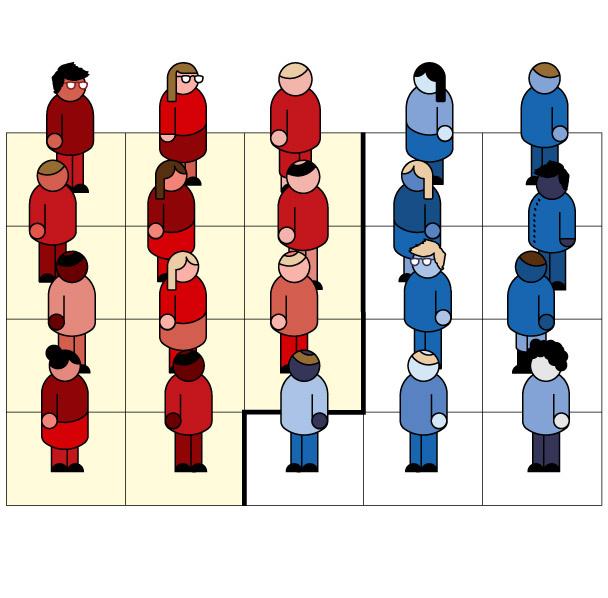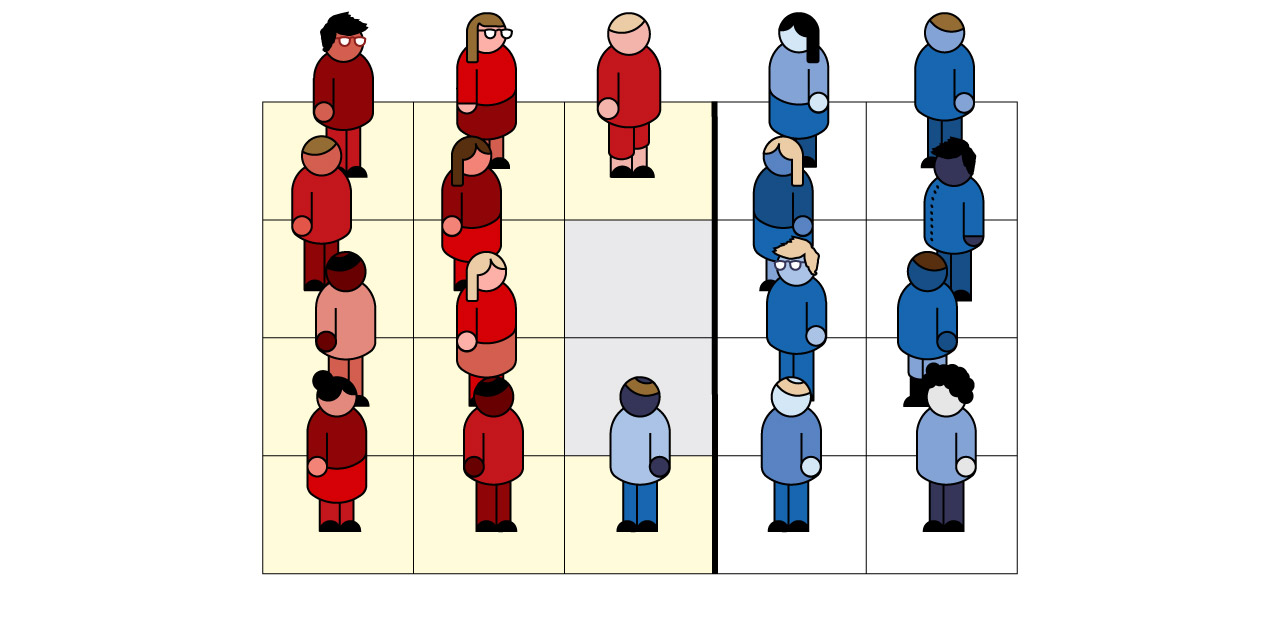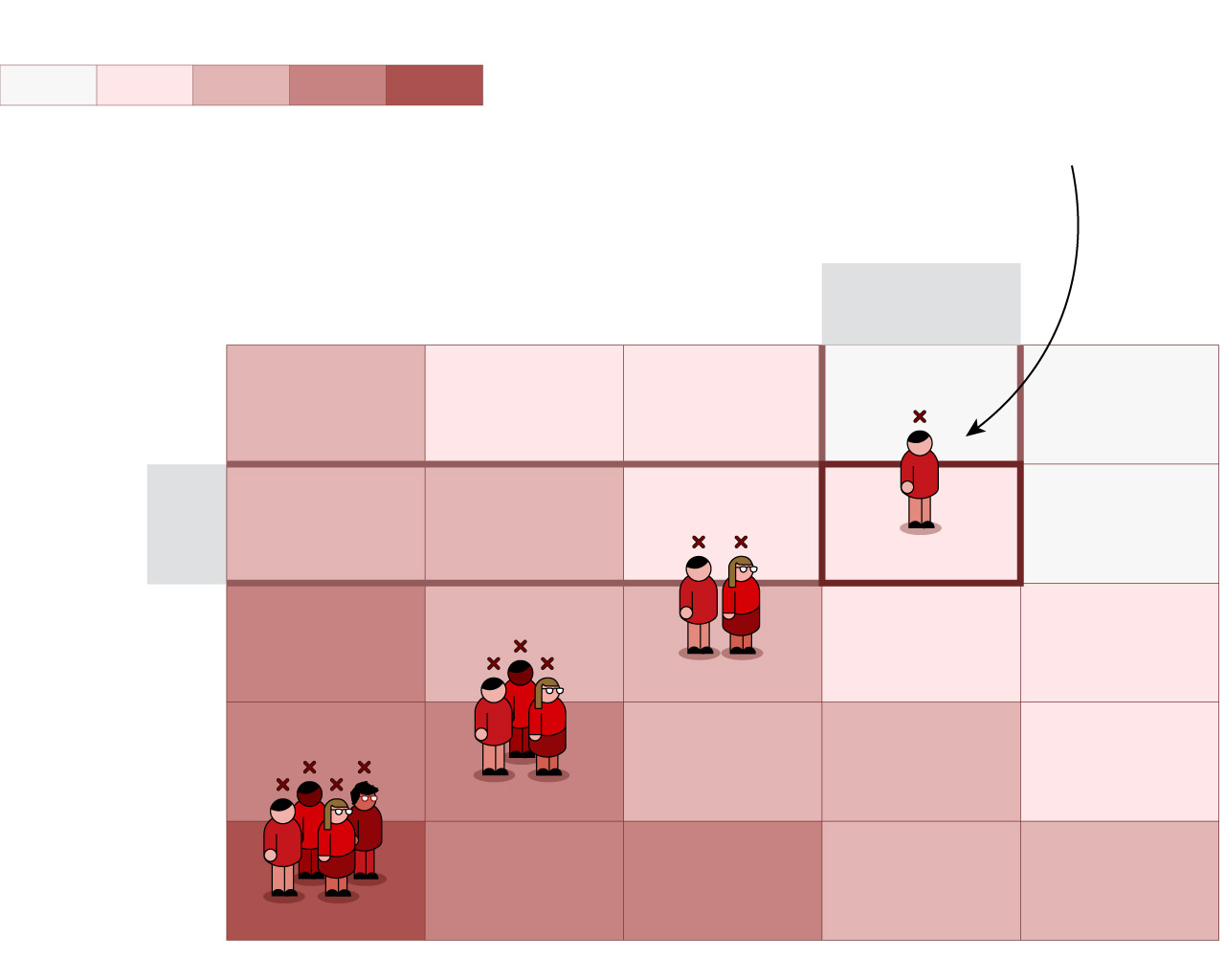Republicans’ House majority is their smallest in decades, and shrinking

[ad_1]
Republicans are in the middle of a months-long stretch of legislating with their smallest House majority in decades. And the margin is about to tighten even more.
Departures from the House have whittled down the Republican caucus from 222 to 218 as of Friday, meaning the party can only afford to lose two members and still pass legislation when everyone is attending and voting.
Rep. Ken Buck (Colo.), announced earlier this month that Friday would be his last day in Congress. Now, Rep. Mike Gallagher (Wis.) has said that he will also leave Congress on April 19, leaving the Republican caucus with only one spare vote to pass legislation.
Such a narrow majority makes it difficult for Republicans to govern in the House. The chamber narrowly passed a $1.2 trillion spending package Friday, with a majority of Republicans voting against the measure.
Democrats are likely to add another lawmaker to their ranks after a special election in a deep-blue, Buffalo-area district in late April. The next special election in a red district isn’t until May 21.
The razor-thin majority makes attendance crucial for party-line votes. Absences are a problem, said Sarah Binder, a political scientist at George Washington University. “It’s heightened in this period of slim majorities with such polarized parties.”
Missing lawmakers can complicate House Speaker Mike Johnson’s (R-La.) calculus for securing a majority.
“I’ve heard the votes are tight; every vote is going to matter around here,” Majority Leader Steve Scalise (R-La.) told reporters when he returned from a six-week absence undergoing treatment for blood cancer for Republicans’ second attempt to impeach Homeland Security secretary Alejandro Mayorkas. It passed by a single vote.
Here’s a quick illustration of how absences can create problems:
A grid showing a House with only 20 members – 11 Republicans and 9 Democrats. The 11 Republicans have a majority.
The same grid but with two members now missing. The grid shows the majority including one Democrat.
Imagine a House that is composed of only 20 lawmakers, let’s say 11 Republicans and 9 Democrats. If everyone is present, Republicans hold the majority.
But if two Republicans are absent, and only 18 total votes are cast, Republicans no longer have a majority; they need a Democrat to join them to secure a majority.
“The speaker has to be very careful,” said Claire Leavitt, a professor of government at Smith College. “Republicans have to make sure they all actually show up for votes.”
Absences are extremely common — members fail to show up for votes for all kinds of reasons, including delayed flights, illness or family events. Since the beginning of this Congress in January 2023, at least one member has been absent for 99.8 percent of House votes according to a Washington Post analysis of House clerk data, with about equal shares of votes having absent Democrats and Republicans.
“When you have so few votes to spare, you really have to be just a nut about getting that whip count right and making sure you know where every single vote is coming from,” Leavitt said.
If all members of the House do show up for a vote, 216 votes constitutes a simple majority and Republicans can afford to lose only two members on an issue. (There are four vacancies starting Saturday, which lowers that threshold from 218.)
There are a limited number of absences and defections Republicans can tolerate.
This matrix shows the same set of combinations once Rep. Ken Buck (R-Colo.) leaves office.
The effort to impeach Mayorkas captured the challenge: On both impeachment attempts, 214 Republicans voted in favor with no Democratic support. Though it had the same number of supporting votes, it only succeeded the second time because there were more absences, lowering the threshold for a majority from 216 to 214.
Increased polarization and a faction of hard-line Republicans also present difficult challenges for Republicans to legislate on their own, a combination that already led to the ouster of former House speaker Kevin McCarthy. “Small majorities can be successful in the House, but this one is racked by this faction,” Binder said. “And it’s very organized.”
Additionally, experts say this Congress is more polarized than in the past, so Republicans cannot count on Democrats to cross party lines on partisan votes.
“With a larger majority, the speaker could write off … the more extreme Republicans in the caucus, but it’s just impossible to do that with such a slim majority,” Leavitt said.
House member data comes from The Daily Kos, news reports and the U.S. House. Jacob Bogage, Adrián Blanco and Artur Galocha contributed to this report.
[ad_2]
Source link




















